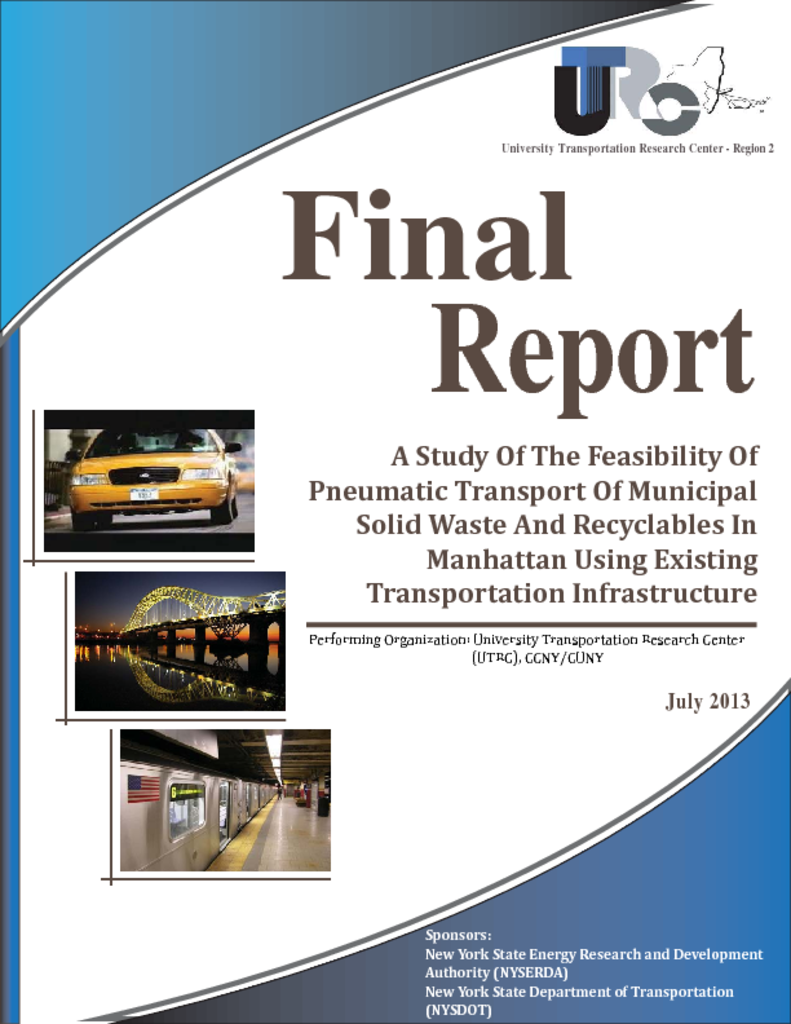This study explored possibilities for using existing transportation infrastructure for the cost-effective installation of pneumatic waste-collection technology in Manhattan. If shown to be economically and operationally feasible, reducing the number of trucks used on the island’s densely encumbered streets could offer significant environmental, public-health, and quality-of-life benefits. Two cases were considered: 1) installing a pneumatic pipeline under the High Line Park (a retrofitted former elevated railroad) to collect waste from the Chelsea Market retail/office/hotel complex along with waste from the Park and adjacent buildings; and 2) installing pipelines in the space being excavated below Second Avenue for the construction of the Second Avenue Subway, in order to collect waste from residential, commercial, and hospital buildings, and from litter bins along a stretch of Second Avenue and in the subway station beneath it. Both design concepts were determined to be physically and operationally feasible and to offer significant quality-of-life benefits. Relative to conventional manual collection, the pneumatic systems would reduce energy use by 60% and greenhouse gas emissions by more than half. Direct operating costs for the proposed pneumatic installations, including the container dray from the pneumatic terminal to the transfer station, would be 30% less than those for conventional manual/truck collection in the two cases. But due to high initial capital costs, overall costs, including debt service, would be 55% higher in the High Line case and 30% higher in the Second Avenue Subway case. On a Net Present Value (NPV) basis, the cost of the pneumatic systems would be between 3.3 and 6.6 times greater than for conventional collection (for the Second Avenue Subway and High Line respectively). NPV costs would be equalized, however, if there were externality benefits on the order of $300,000 to $400,000 per year (respectively), using conservative assumptions. Given the space savings and other public-health and quality-of-life benefits associated with pneumatic systems--and the monetized value of decreased carbon emissions and energy use--externality benefits of this order of magnitude would appear to be likely.




